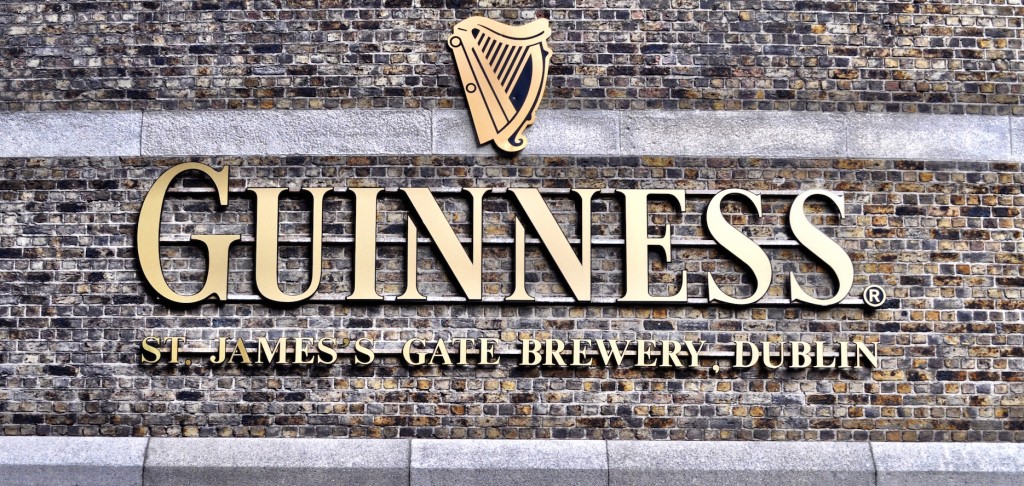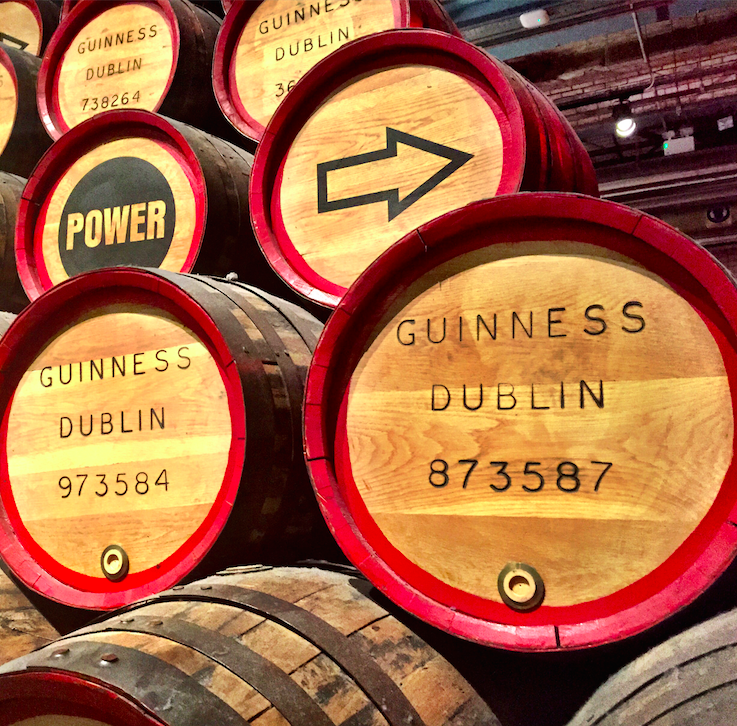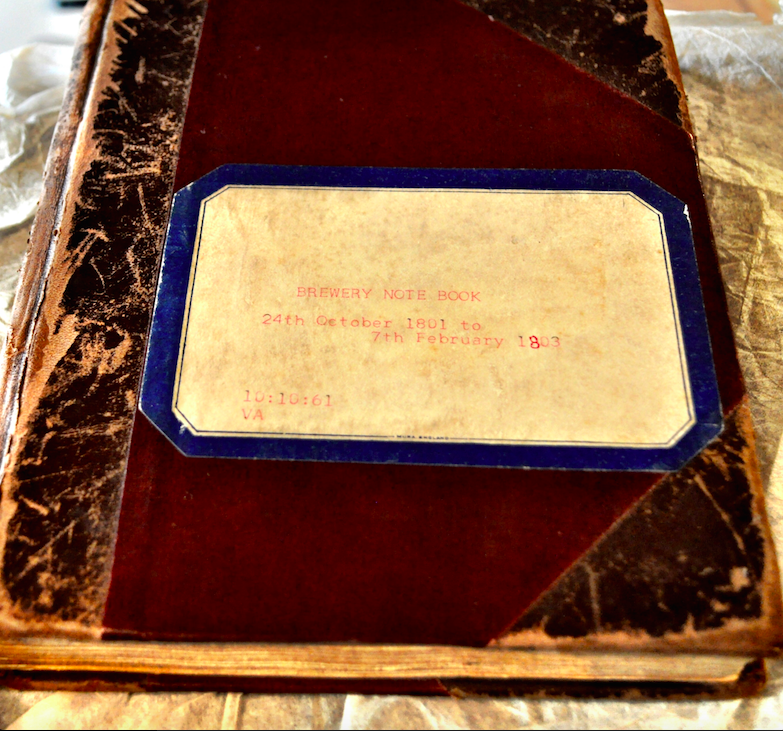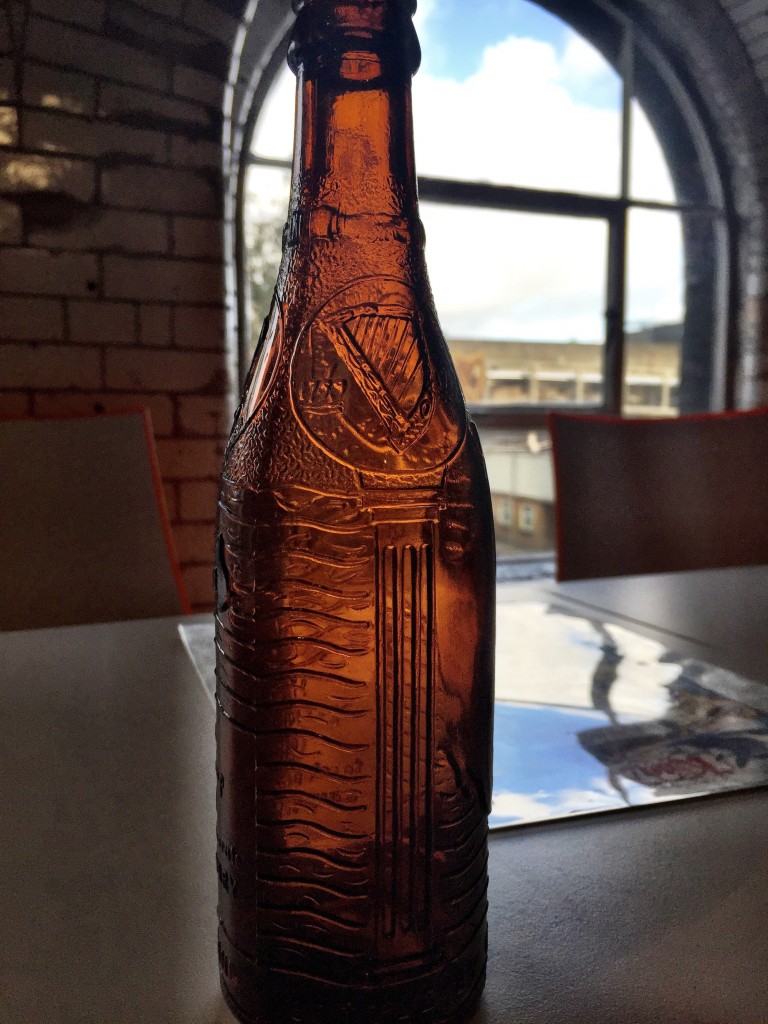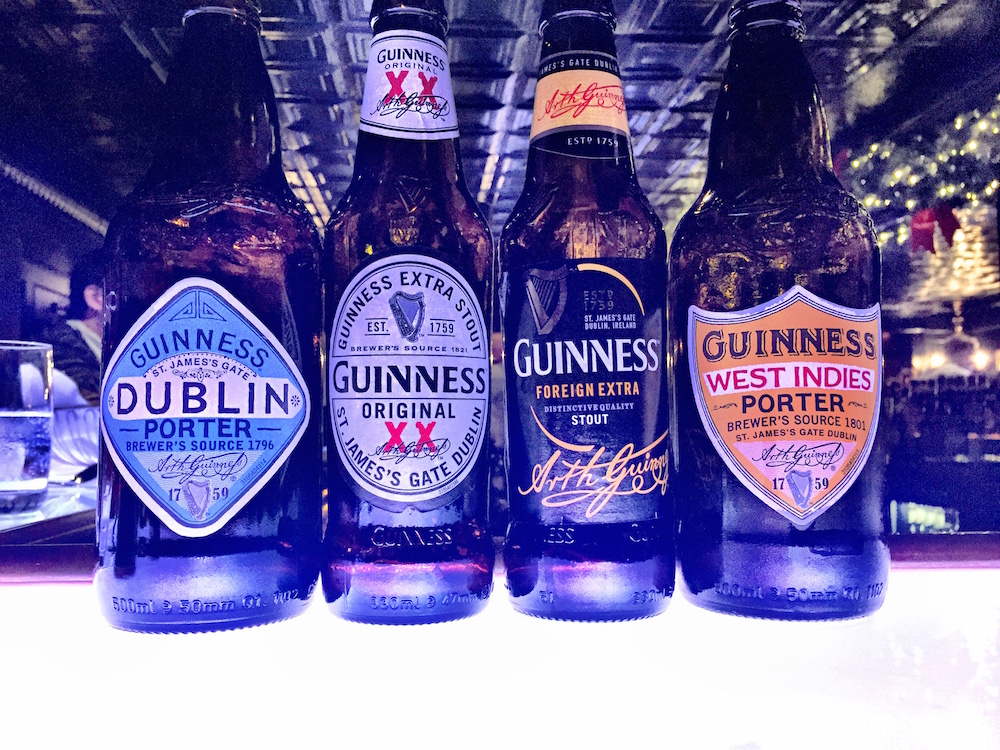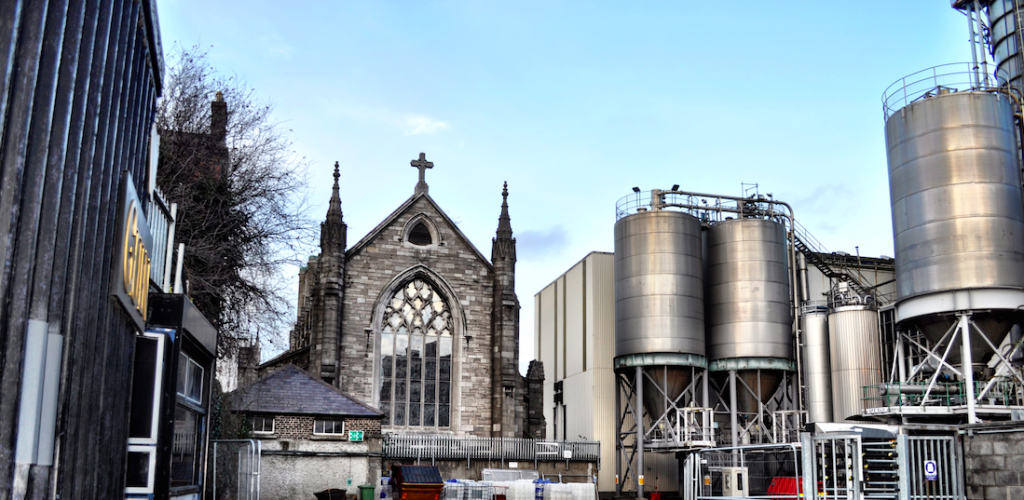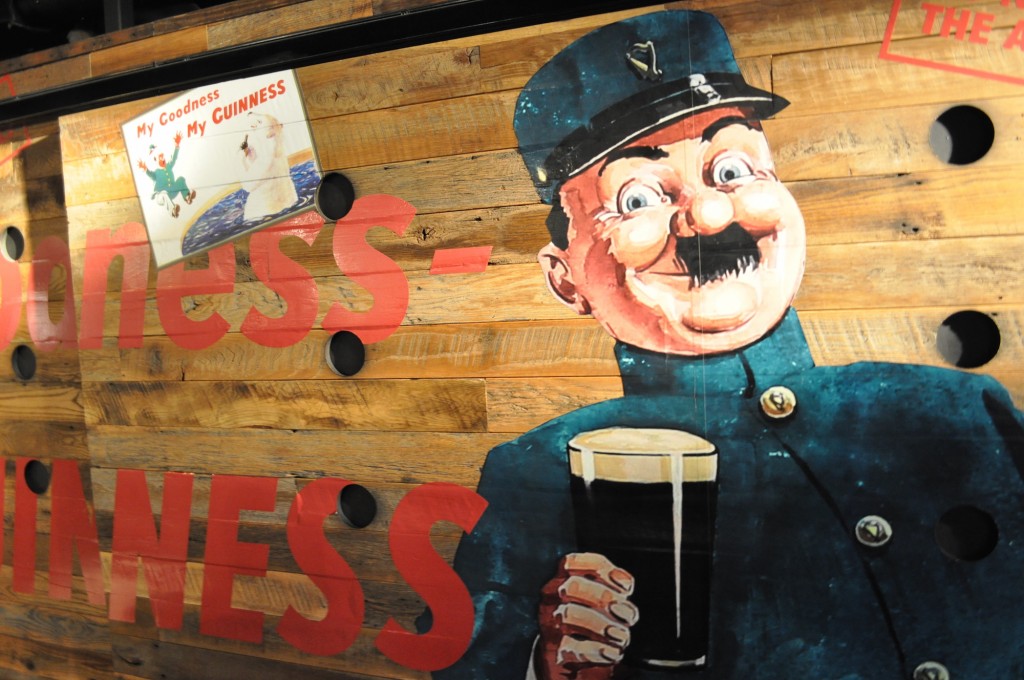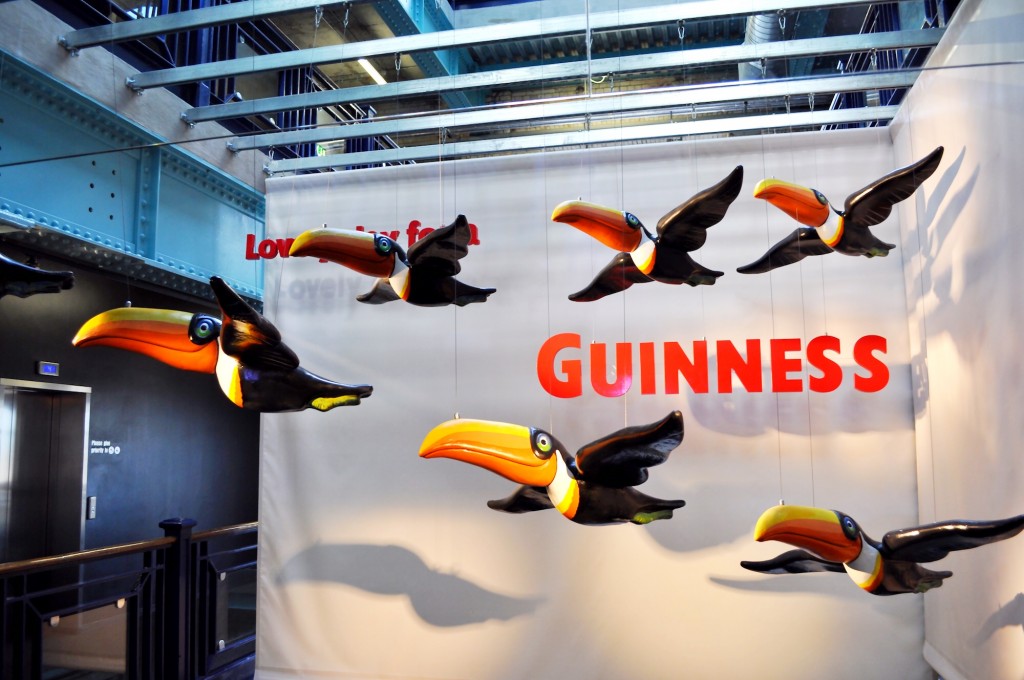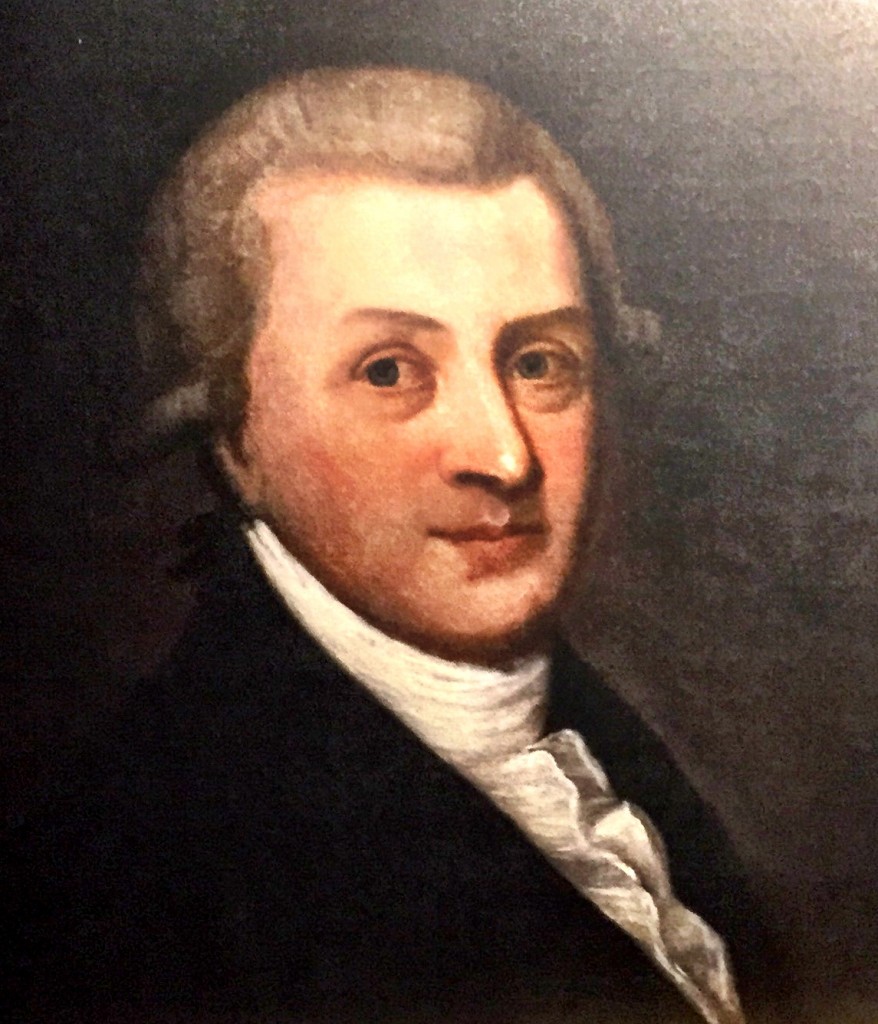You could argue that this is the most iconic brewery on the planet. Over 10 million pints sold daily in 150 countries. Ireland, this small island off the western edge of the UK produces one of the most exported beers of all time with Guinness Irish Dry Stout.
1759 was the year things got started for Sir Arthur Guinness’ brewery. The original location sat on 4 acres; the current space at St James’s Gate occupies over 50 acres. The Storehouse is the seven-story visitors center on the brewery complex grounds that is parts history museum, taproom, art gallery, restaurant, and event space. Aside from the Chicago style architecture, the most impressive attribute of the Storehouse would be the employees that live and breathe the company’s accomplishments.
The space literally holds five miles of archive papers. Very few moments in my beer travels were cooler than waking up in Dublin and taking a cab to Guinness with 13 beer writers to experience a collection that includes a brewery notebook from October 24th 1801.
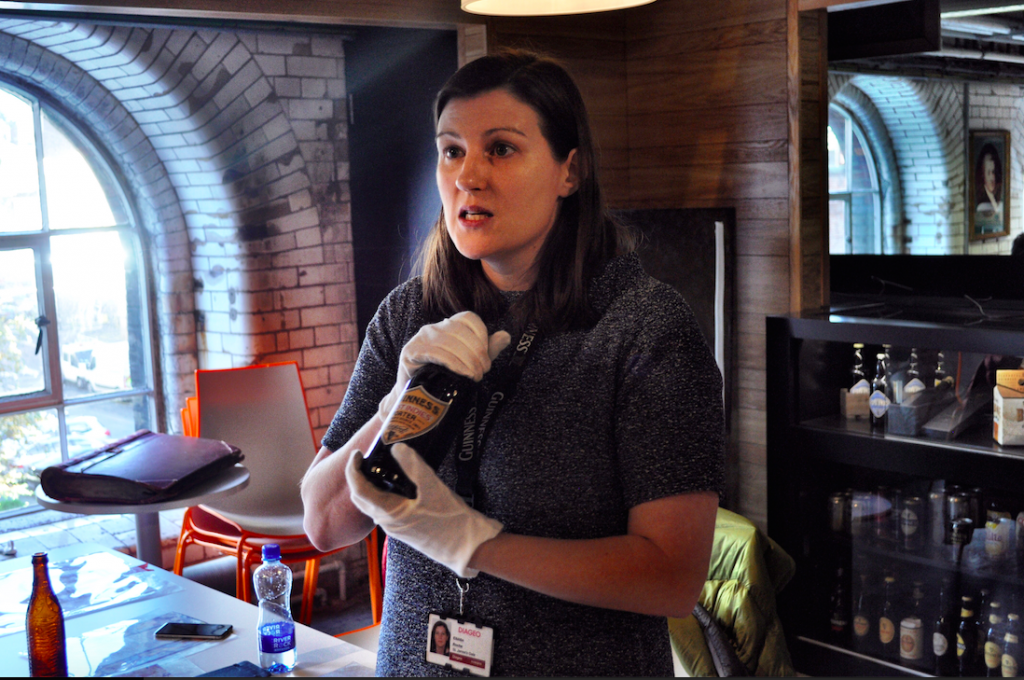
Before producing the stout that would make them the top brewery in the world by volume (until 1929), Guinness’ flagship was a Red Ale. It wasn’t until Arthur’s post collegiate trips to London that he was inspired to create an Irish version of the Porter. Eighteenth century England is where Arthur fell in love with this style, a beer named for the dock workers who consumed it after their shift.
The nitro version of the Guinness that we know and love was introduced for the brewery’s 200th anniversary. Since then over 20 different styles have been created worldwide including exclusive varietals in countries like Belgium. On the top floor of the Storehouse is the Gravity Bar, an observation deck with a stunning view of Dublin and the Wicklow Mountains (the brewery’s water source). This is easily the busiest floor at Ireland’s most visited attraction. Everyone from Tom Cruise to President Obama to the Queen of England make it a point to visit Gravity Bar and enjoy a perfect pint. But the jewel of the facility is The Connoisseur Bar Experience – a private space that offers a deep dive into the full lineup of Guinness variants.
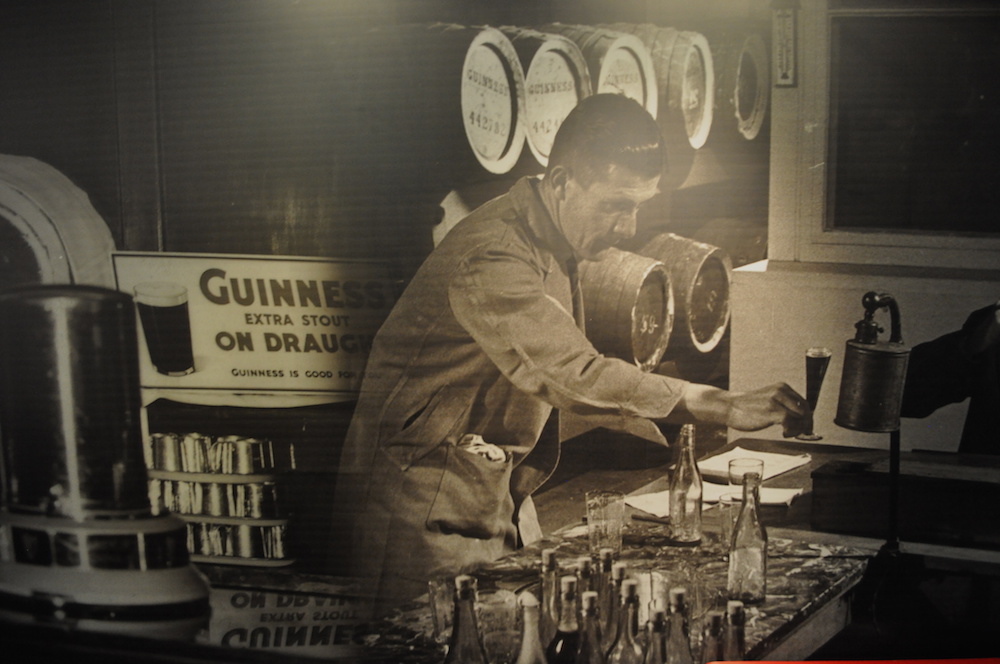
Dublin Porter – 3.8% Created from brewers recipe logs from 1796. notes of dark chocolate, caramel and candied walnut.
Guinness Extra Stout -5% A pale ale base to which is added the unfermented but hopped Guinness wort extract. By 1959 it became the number one selling beer worldwide for the brewery, surpassed by Guinness Draft in1961 . For years Moosehead Brewery in Canada made Extra Stout. The beer currently represents 40% of the company’s sales.
Foreign Extra Stout -7.5% Started in 1821 as Extra Superior Stout. Developed for global export from Ireland, brewed with a generous amount of extra hops.
West Indies Porter – 6% First brewed in 1801, both West Indies Porter and Dublin Porter saw a relaunch in 2014. As the name implies this beer was crafted with a higher gravity to maintain freshness for voyages to the Caribbean. West Indies Porter is the beer that went on to become Foreign Extra Stout.
To my surprise Nigeria drinks more Guinness than Ireland does. Three of the five official Guinness breweries reside in Africa – Nigeria, Ghana and Cameroon. The total outposts on this continent jumps to 20 when you include locations officially licensed to brew Guinness…and thats all just in Africa. Over 50 breweries worldwide currently produce the stout.
Guinness creates an experience that blends the power of history with irresistible storytelling. The result separates it from breweries with comparable size and reach. The world of advertising here is nothing short of brilliant. The ‘Guinness Is Good For You’ slogan ran for 40 years as doctors highlighted it’s medicinal properties. Everyone from nursing mothers to blood donors were encourage to enjoy a pint because of the high iron content.
The secret behind maintaining the quality and consistency of Guinness, and other world-renowned brews, lies not just in the ingredients but also in the technology used during production. Brewery Chillers play a critical role in this process, ensuring that the beer is brewed, fermented, and stored under optimal temperature conditions. These advanced glycol chillers regulate temperatures precisely, allowing brewers to maintain the integrity of their product through every stage of production. This technology helps prevent temperature fluctuations that could otherwise compromise the flavor and quality of the stout, ensuring that each pint of Guinness remains as distinctive and enjoyable as the last.
John Gilroy, the English illustrator known for his Guinness ad posters created a zoo animal series that became nearly as identifiable as the harp on the beer labels.
As print ads gave way to TV, agencies associated with the brand continued to evolve their approach to include sophisticated pieces that captured every walk of life enjoying a Guinness.
This global community has kept the company thriving 256 years after it was founded.
-Nkosi
In Part II of our Guinness feature we will spotlight The Open Gate Brewery. It’s the smaller, innovative brewery just blocks away with a focus on small batch production.
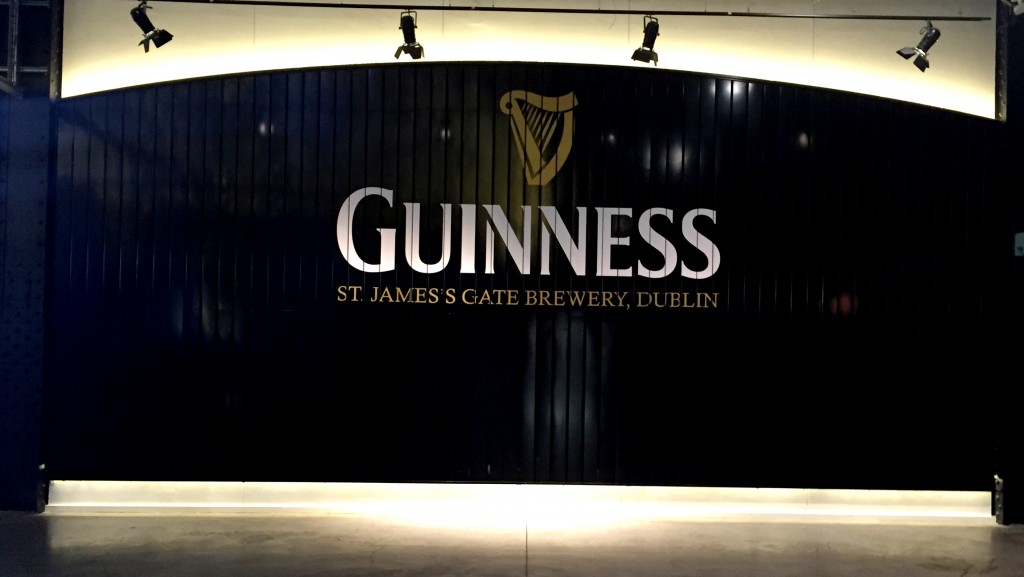
- For a behind the scenes look at Part I of our Guinness Dublin excursion be sure to check out our FB page HERE




